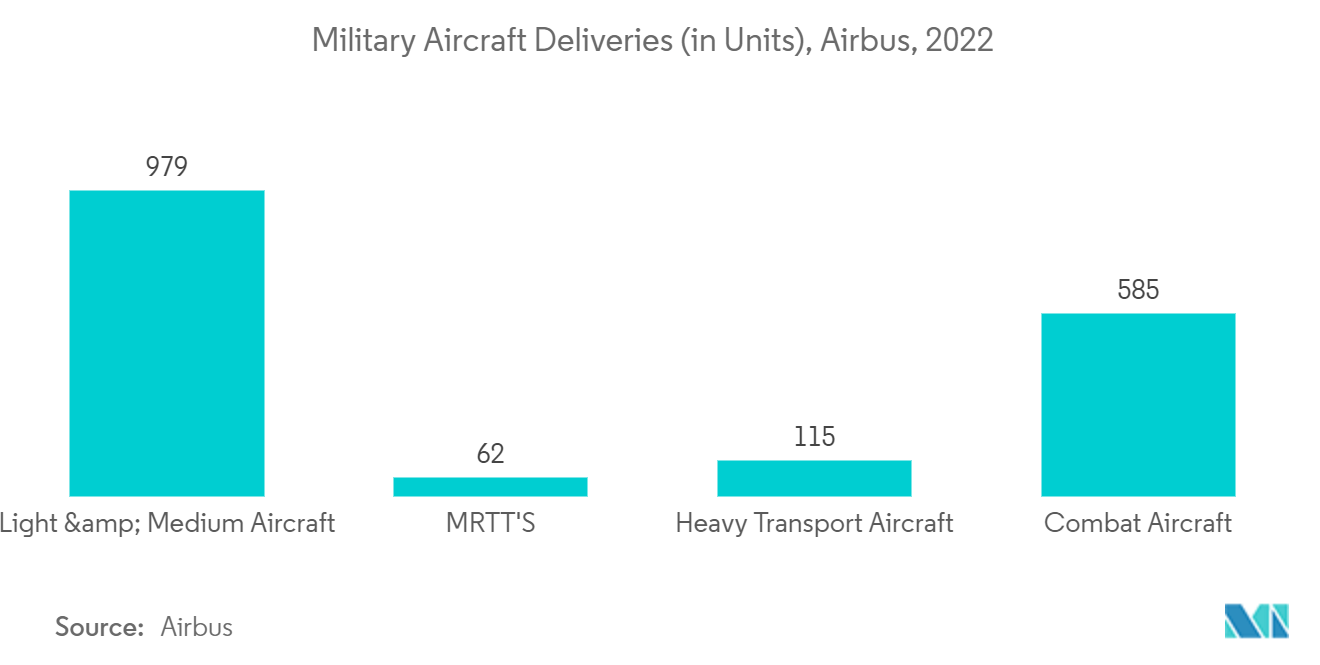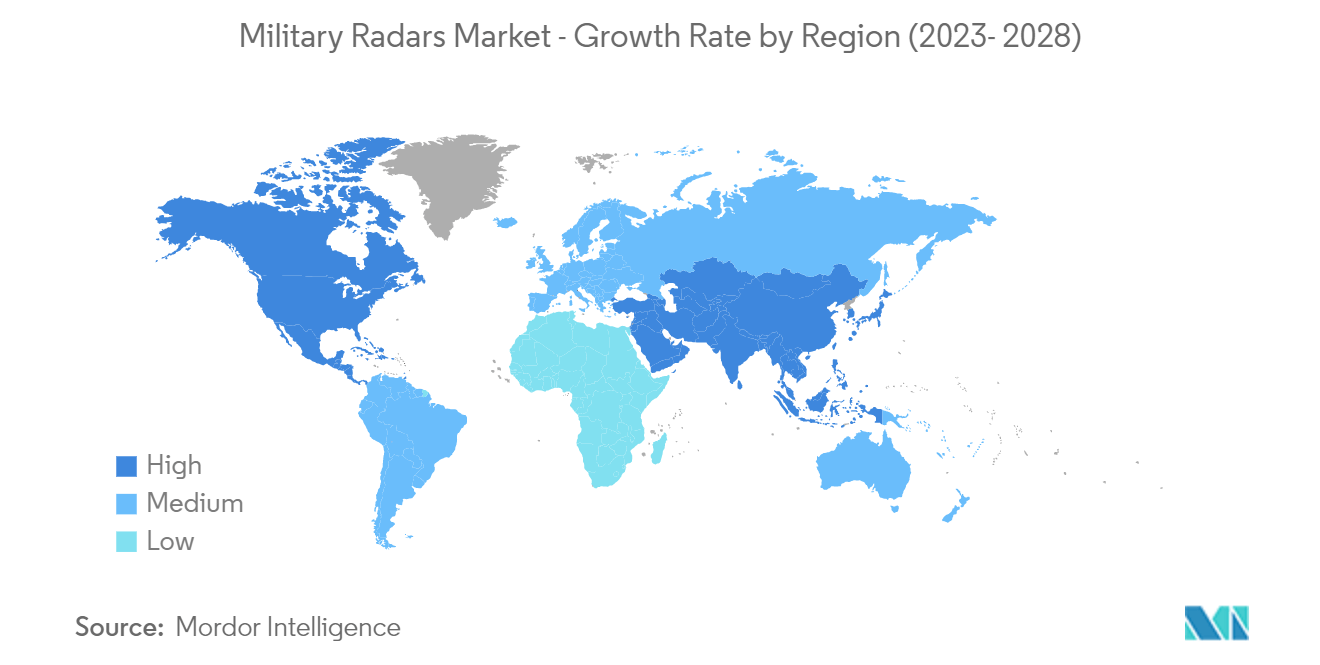Market Trends of Military Radars Industry
Airborne Segment Expected to Register the Highest CAGR During the Forecast Period
Modern military planes are made to do different kinds of missions. Because of this, the radar systems on board must be able to do specific tasks that match the mission profiles. For example, radar is used in fighter planes to find enemy planes and control missiles, rockets, and other weapons on board. Similarly, in a bomber aircraft, radar is used to find surface targets, fix or move them, and navigate and avoid obstacles. An increase in the global aerial fleet has led to a rise in the demand for airborne radar. Countries like the United States, India, China, Iran, Israel, and Russia, among others, have invested in modernizing and upgrading their existing air fleets. China is using stealth technology in unmanned platforms and is unveiling more UAV variants. Furthermore, rising global expenditure and rising spending on enhancing defense capabilities drive market growth.
Moreover, the cost-effectiveness and ease of operations of unmanned platforms, compared to manned platforms, aided the rapid adoption of UAVs in defense applications (for both surveillance and attack operations). Military organizations are largely deploying unmanned platforms in conflict regions across the world. The US Army is planning to integrate ground-penetrating radar onboard small UAS to deliver a digital map that shows the shapes, sizes, and features of objects in the environment. Ground-penetrating radar technology has not proliferated into UAS due to size, weight, and power (SWaP) constraints. Hence, the US Army plans to test the system's feasibility by collecting data on inert unexploded ordnance (UXO), synthetic tracer material, and flora and fauna using radar on a chip operating between 100 MHz and 5 GHz attached to an unmanned system. Additionally, tethered aerostat radar systems are being used as low-level airborne ground surveillance systems in a few countries. These factors render a positive outlook for the airborne radar segment of the market during the forecast period.

Asia-Pacific Expected to Witness the Highest Growth During the Forecast Period
Asia Pacific is anticipated to show remarkable growth during the forecast period. The growth is due to increasing defense expenditures and the rising procurement of next-generation military radars from China, India, and South Korea. Increasing cross-border conflicts, political disputes among neighboring countries, and growing terrorism lead to rising spending on enhancing defense capabilities.
China is making progress on the KJ-600 surveillance plane, which is thought to be able to find stealth planes like the F-22 and F-35. The plane is meant to be used as a carrier-based early warning system for the People's Liberation Army (PLA). The Indian Air Force is putting a lot of effort into expanding and modernizing its fleet on a large scale, even though the number of fighter planes in its squadron is going down. As of March 2021, the Indian Air Force had a fighter aircraft squadron strength of 31 against a sanctioned strength of 42 squadrons. In January 2021, India signed an order for 83 Hindustan Aeronautics Limited (HAL) Tejas Mk-1A light combat aircraft. The order covers 73 single-seat Tejas Mk-1As and 10 two-seat trainers. It is worth USD 6.4 billion. Since 2017, South Korea has been operating the Terminal High Altitude Area Defense (THAAD), a transportable, ground-based missile defense system. In May 2020, South Korea announced the adoption of new, advanced interceptor missiles for the fielded THAAD systems. In the THAAD system, the radar detects an incoming missile and alerts the system operators, who then fire a projectile from a truck known as the interceptor at the missiles. On the other hand, Japan is reportedly seeking to devise a new national defense program to develop new missile defense systems and replace the currently fielded Aegis systems. Such developments are likely to foster the rapid growth of the market in Asia-Pacific during the forecast period.

